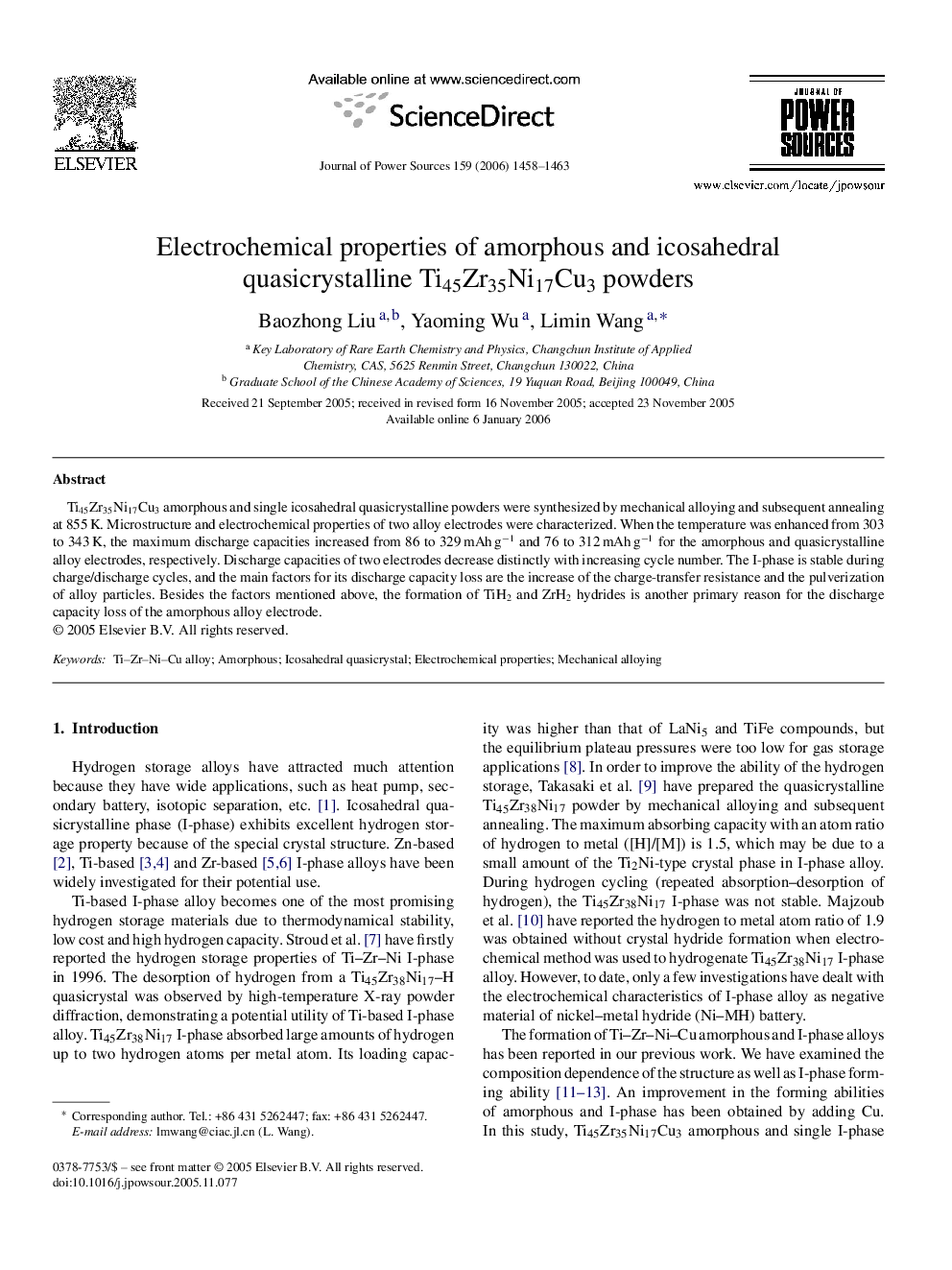| Article ID | Journal | Published Year | Pages | File Type |
|---|---|---|---|---|
| 1287313 | Journal of Power Sources | 2006 | 6 Pages |
Ti45Zr35Ni17Cu3 amorphous and single icosahedral quasicrystalline powders were synthesized by mechanical alloying and subsequent annealing at 855 K. Microstructure and electrochemical properties of two alloy electrodes were characterized. When the temperature was enhanced from 303 to 343 K, the maximum discharge capacities increased from 86 to 329 mAh g−1 and 76 to 312 mAh g−1 for the amorphous and quasicrystalline alloy electrodes, respectively. Discharge capacities of two electrodes decrease distinctly with increasing cycle number. The I-phase is stable during charge/discharge cycles, and the main factors for its discharge capacity loss are the increase of the charge-transfer resistance and the pulverization of alloy particles. Besides the factors mentioned above, the formation of TiH2 and ZrH2 hydrides is another primary reason for the discharge capacity loss of the amorphous alloy electrode.
